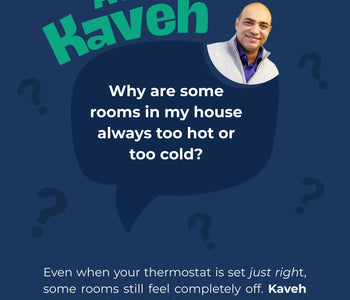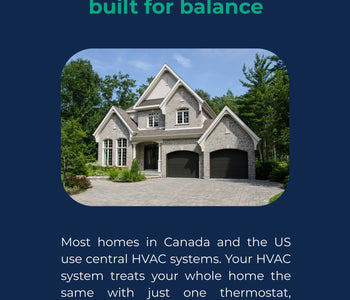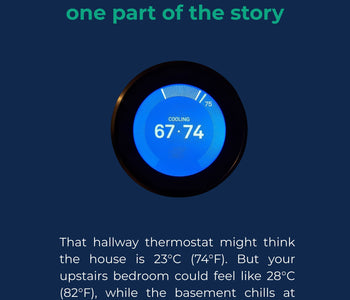Why Your HVAC System Can Make You Feel Like Goldilocks

It seems like no matter what we do, there are a couple of rooms in our houses that are either too hot or too cold. Is there any way to have your home feel just right?
Understanding How Your HVAC Works
Most homes have a forced-air central heating system. These systems use the air itself to transfer the heat around your home. The air travels in a closed loop ducting systems from the mechanical room, usually in the basement to the different areas of your house.To create a closed ducting system, there are a number of returns in each house that allow the air to get back to the main system and reheat/re-cool again. To keep the air fresh, the system will take fresh air from outside of your home and incorporate it into the loop and release no-so fresh air outside your home.
The engineers who design such systems make sure they’re capable of providing enough heated/cooled air flow for the entire building. The ducting system is also typically designed in a way, to supply enough conditioned air for all the rooms/areas based on mechanical considerations such as room size, wall and windows material,and the heat loss coefficient of the room.
The system designs are comprehensive and yet many houses in North America have hot and cold spots. In most of the residential, or even commercial buildings, there are many areas that do not get to the desired temperature due to poor air flow while in other areas excess flow causes overheat/over-cool.
As mentioned, the amount of the generated conditioned air is always more than enough to get the entire building to the desired temperature. The problem is the air distribution system or what we know as the ducting system. Hence, if one area does not get enough flow, there is ALWAYS another area with the excess flow. For example in summer most people have the experience of having hot bedrooms located on the second floor while the basement is freezing cold.
What Can Cause Problems
There are different reasons that can create such problems. Some of them can be fixed and some are not very easy to fix. The most common ones are as follows:
There are different reasons that can create such problems. Some of them can be fixed and some are not very easy to fix. The most common ones are as follows:
In many cases, especially in residential buildings, the ducting system is not implemented according to the design and mostly due to limitations in the construction process. These limitations occasionally force construction workers or builders to deviate from the original design. And sometimes a very small change in the design can compromise the entire design effectiveness. For instance, adding only one extra duct elbow to the system can affect the flow in a few rooms and directing the flow to other areas. This will create some rooms with weak flow, and some get more than needed.
Without any flexible or dynamic air redirection mechanism there will always be a fixed amount of air going to each room. Without a way to redirect air flow, it is impossible to increase or reduce the flow in each room.
Our smart register booster fans can provide some level of energy saving by creating an equilibrium throughout homes. You won't need to turn up or down your thermostat settings to adjust with a desired temperature in a room or at different times of the day.
In some cases, the ducts get disconnected due to reasons like bad renovation work or structure movements.
There are many tiny holes in every home from which air escapes. This may not sound like a problem but when you put those holes together, it’s equivalent to a large basketball sized hole (on average) from which HVAC air leaks and causes energy waste.




